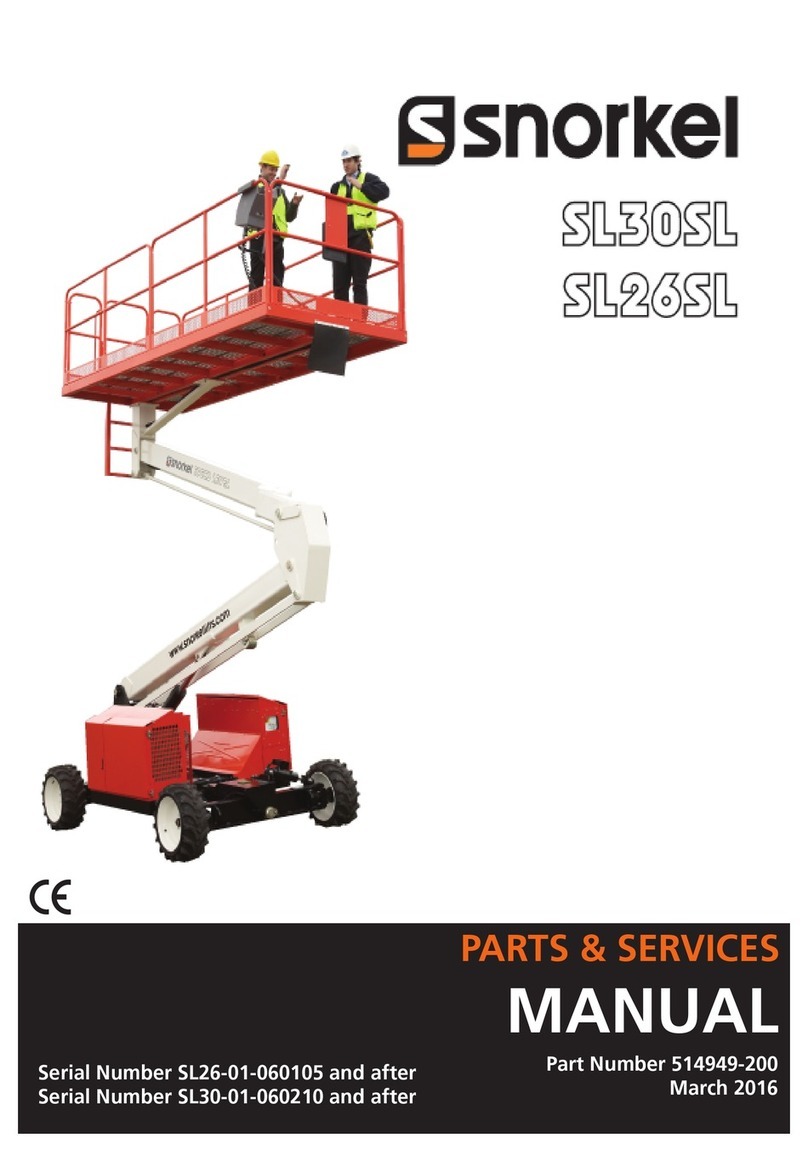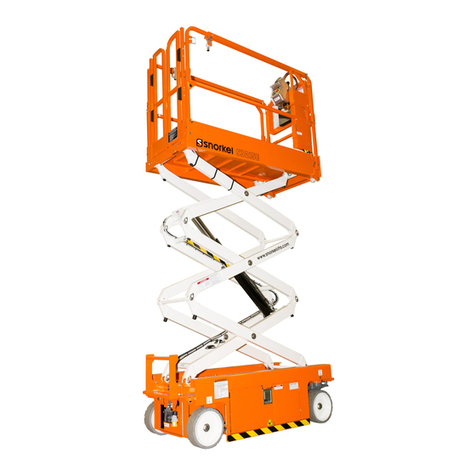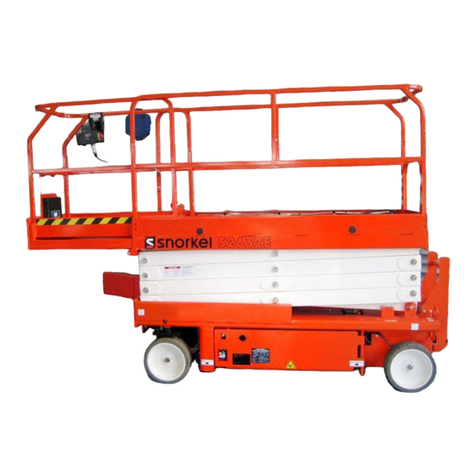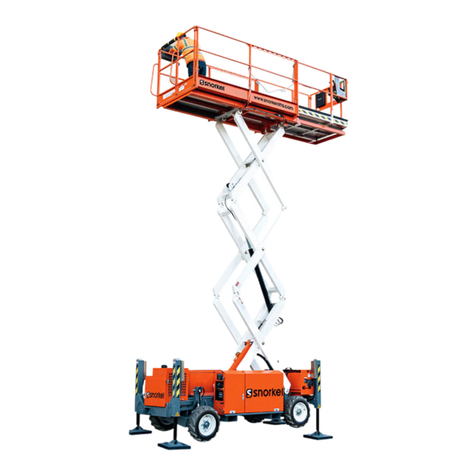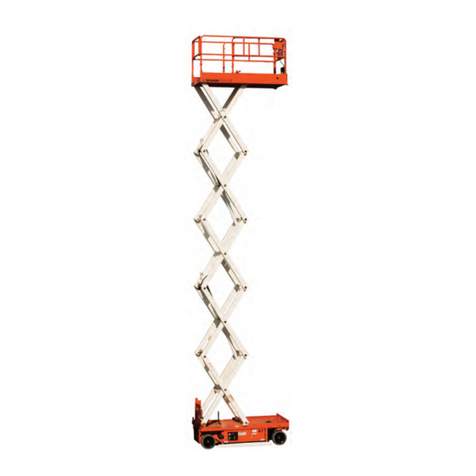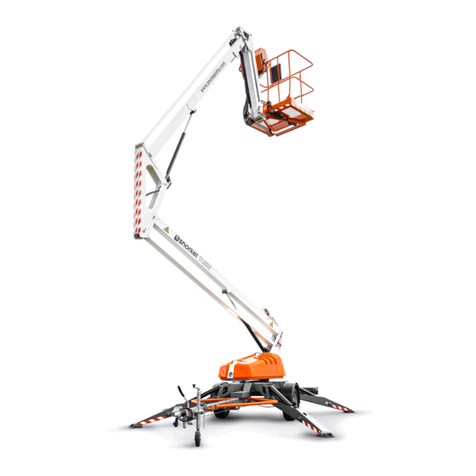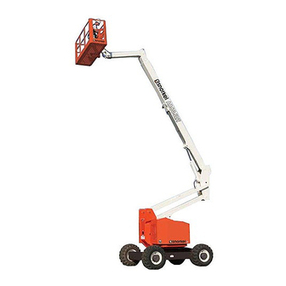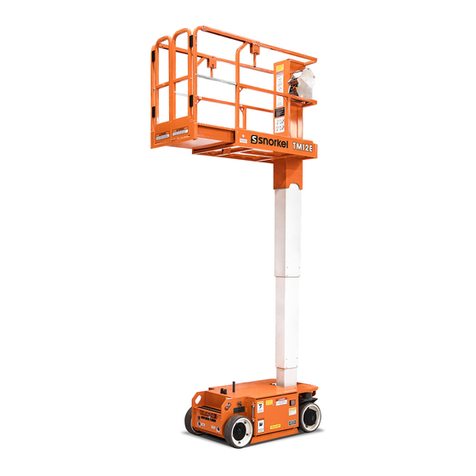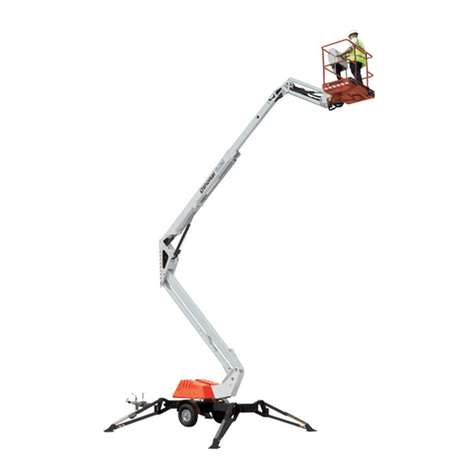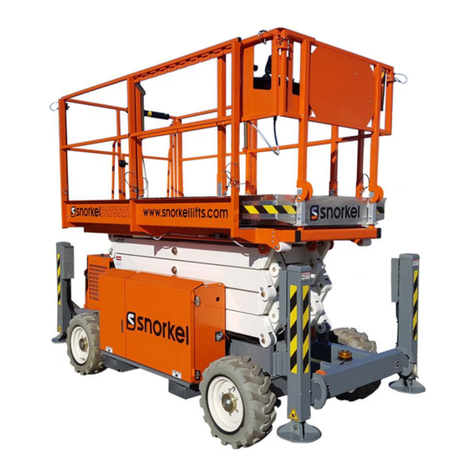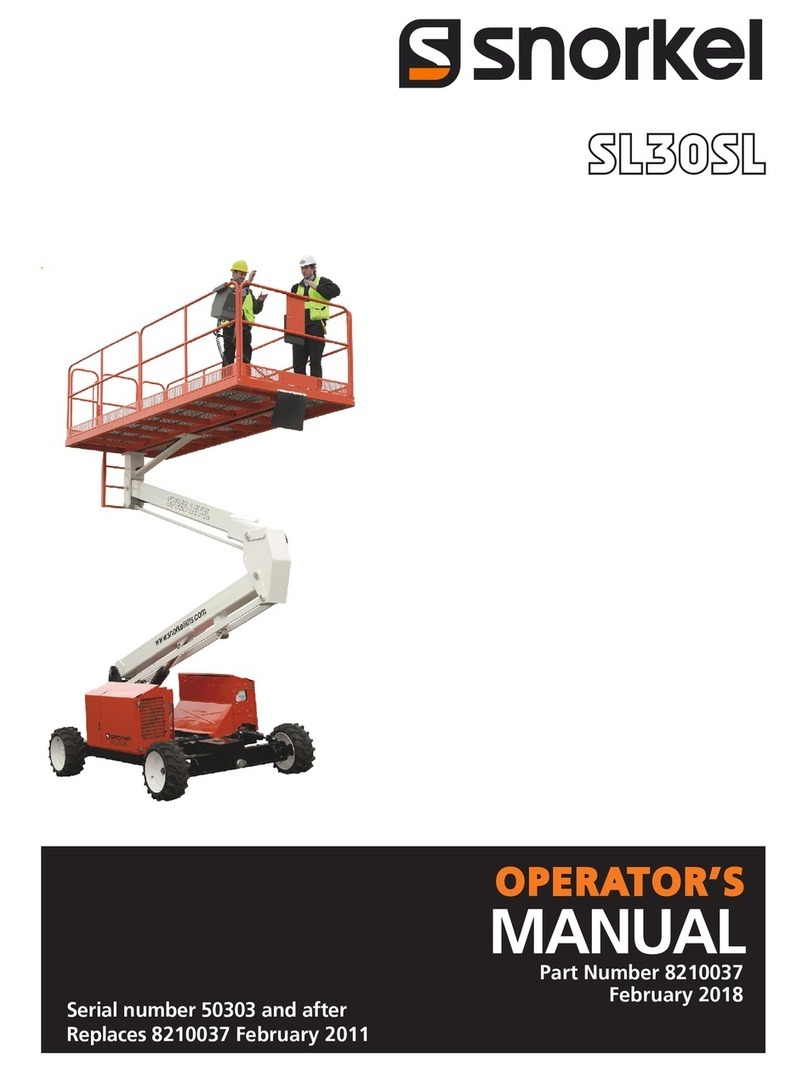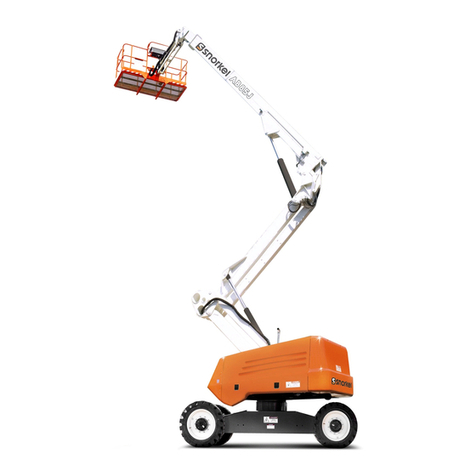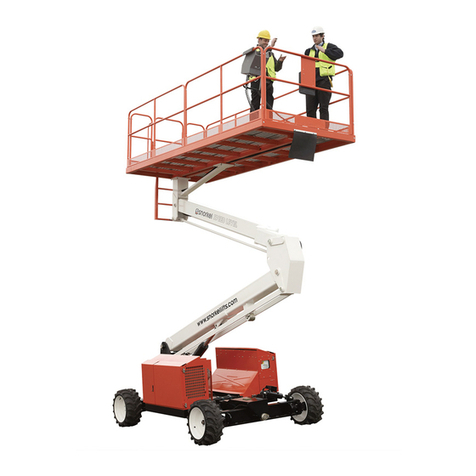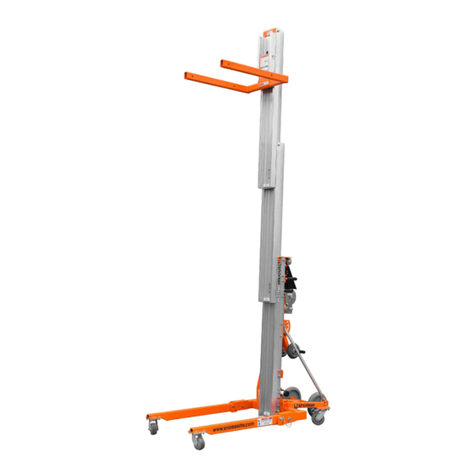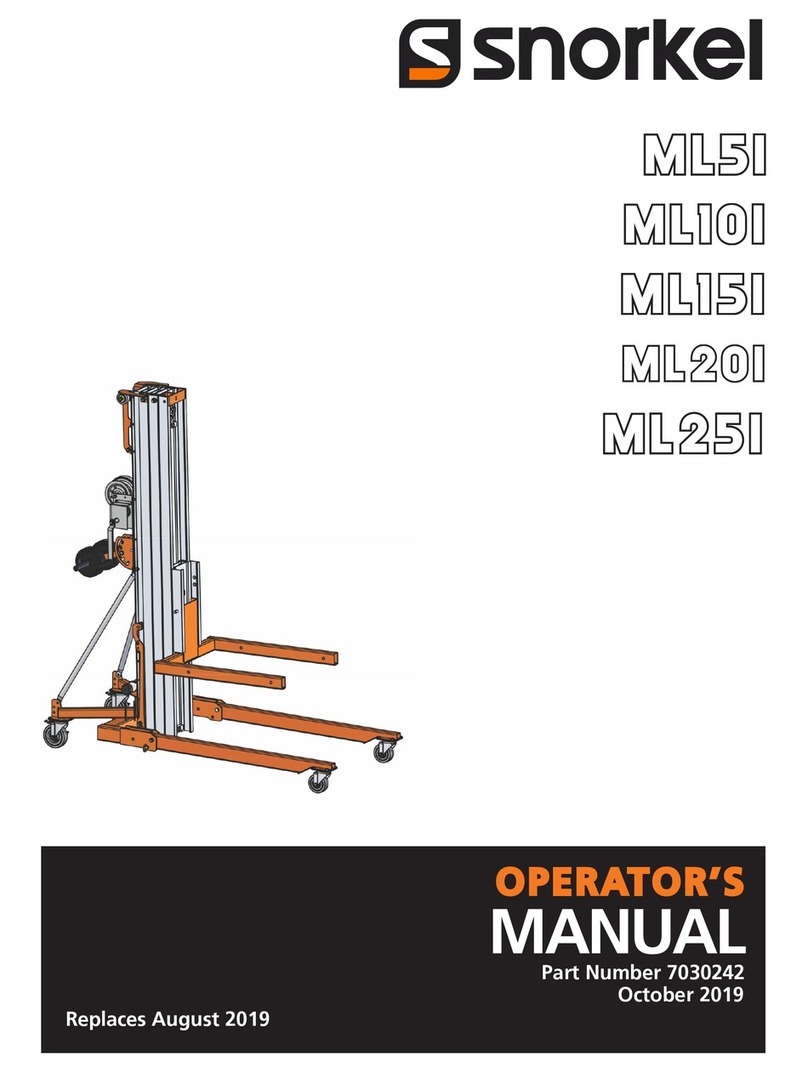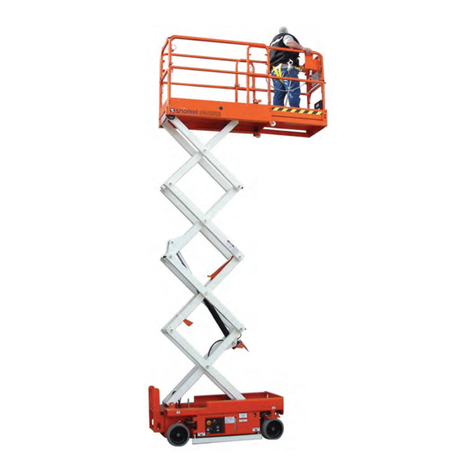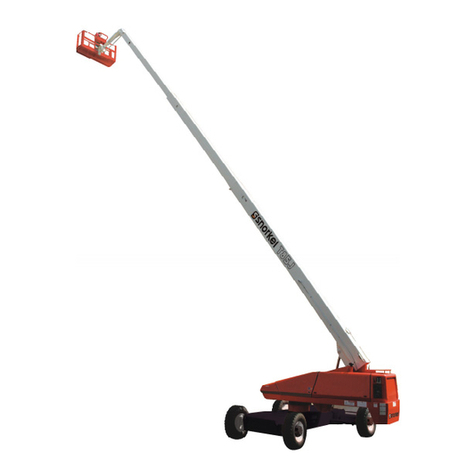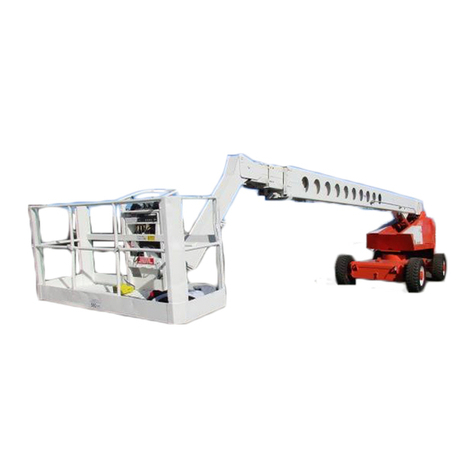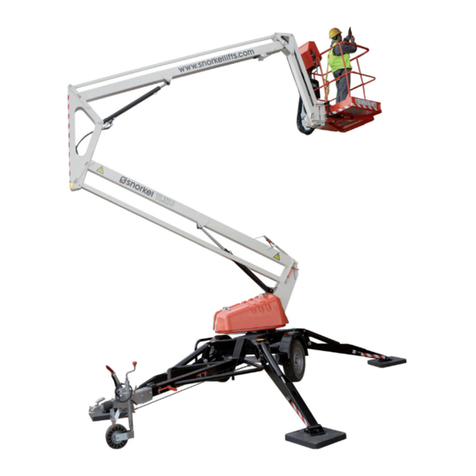
Table of Contents
Electrical Hazard
Electrical Hazard Warning ..................i
Minimum Safe Approach Distance ...........ii
Table 1 - (M.S.A.D.) .....................ii
Figure 3 - (M.S.A.D.) ....................ii
Introduction
Standard SR2770........................iii
Options................................iii
Operation Manual........................iii
Safety Alerts............................iii
Operation ..............................iii
Maintenance ...........................iv
Responsibilities of parties .................iv
In summary ............................iv
Additional information ....................iv
1. Safety
Safe Operation ........................1-1
Electrocution Hazards ...................1-1
Minimum safe approach distance .........1-1
Pre-start Inspection .....................1-1
Work Place Inspection and Practices .......1-1
Operation.............................1-2
Tipover and Falling Hazards ..............1-3
General Safety Precautions ..............1-3
Hydraulic System Precautions ............1-3
Fire Prevention ........................1-3
Engine and Fuel Handling Precautions......1-4
Batteries .............................1-4
Safety Decals and Placards ..............1-4
Safety Placards and Decals Location .......1-5
2. Safety Devices
Safety Device Information ................2-1
Emergency Stop Switches ...............2-1
At platform control box .................2-1
At ground control box ..................2-1
Alarms ...............................2-1
Platform control box ...................2-1
Ground control box ....................2-2
Level sensor .........................2-2
Lowering ............................2-2
High temperature .....................2-2
Low oil pressure ......................2-2
Drive (reverse) .......................2-2
Drive (forward) .......................2-2
Guardrails ............................2-2
Safety Prop ...........................2-3
Swinging Gate .........................2-3
Safety Control .........................2-3
Bubble Level ..........................2-3
Operator Horn ........................2-3
Stabilisers ............................2-4
RCD/ELCB AC Outlet (option) ............2-4
Flashing Light (option)...................2-4
Lanyard Anchor Points (option) ...........2-4
3. Specifications
General Specifications, Standard Machines ..3-1
Recommended Hydraulic Oil..............3-1
Engine Data...........................3-2
Engine Oil Charts ......................3-2
WG750-G ...........................3-2
D905-B .............................3-2
Hydraulic Hose Age.....................3-2
Nomenclature and Serial Numbers .........3-3
4. Gauges
Water................................4-1
Amps ................................4-1
Engine Oil ............................4-1
Hydraulic Oil Level .....................4-1
Hours................................4-2
Fuel Level (option)......................4-2
Bubble Level (stabiliser machines only) .....4-2
5. Automatic Shut-offs and Circuit Breakers
Automatic Shut-offs ....................5-1
Level sensor .........................5-1
Engine temperature ...................5-1
Engine oil pressure ....................5-1
Platform height vs. drive speed...........5-1
Dynamic brakes ......................5-1
Alternator not charging .................5-1
Stabilisers ..........................5-1
Circuit Breakers .......................5-2
Main breaker .........................5-2
RCD / ELCB outlet (option)..............5-2
6. Controls
Controls ..............................6-1
Hydraulic Compartment..................6-1
Ground Control Box.....................6-1
Platform Control Box ....................6-2
Self Levelling Stabilisers (optional)........6-3
7. Daily Inspection and Maintenance
Daily Inspection and Maintenance Table ....7-1
Fuel Level ............................7-2
(Option - LPG) .......................7-2
Fuel Filter (diesel engines only) ...........7-2
Fuel Leaks............................7-2
Engine Oil ............................7-3
Engine Coolant ........................7-3
Radiator Cap ..........................7-3
SR2770 – 11669A
